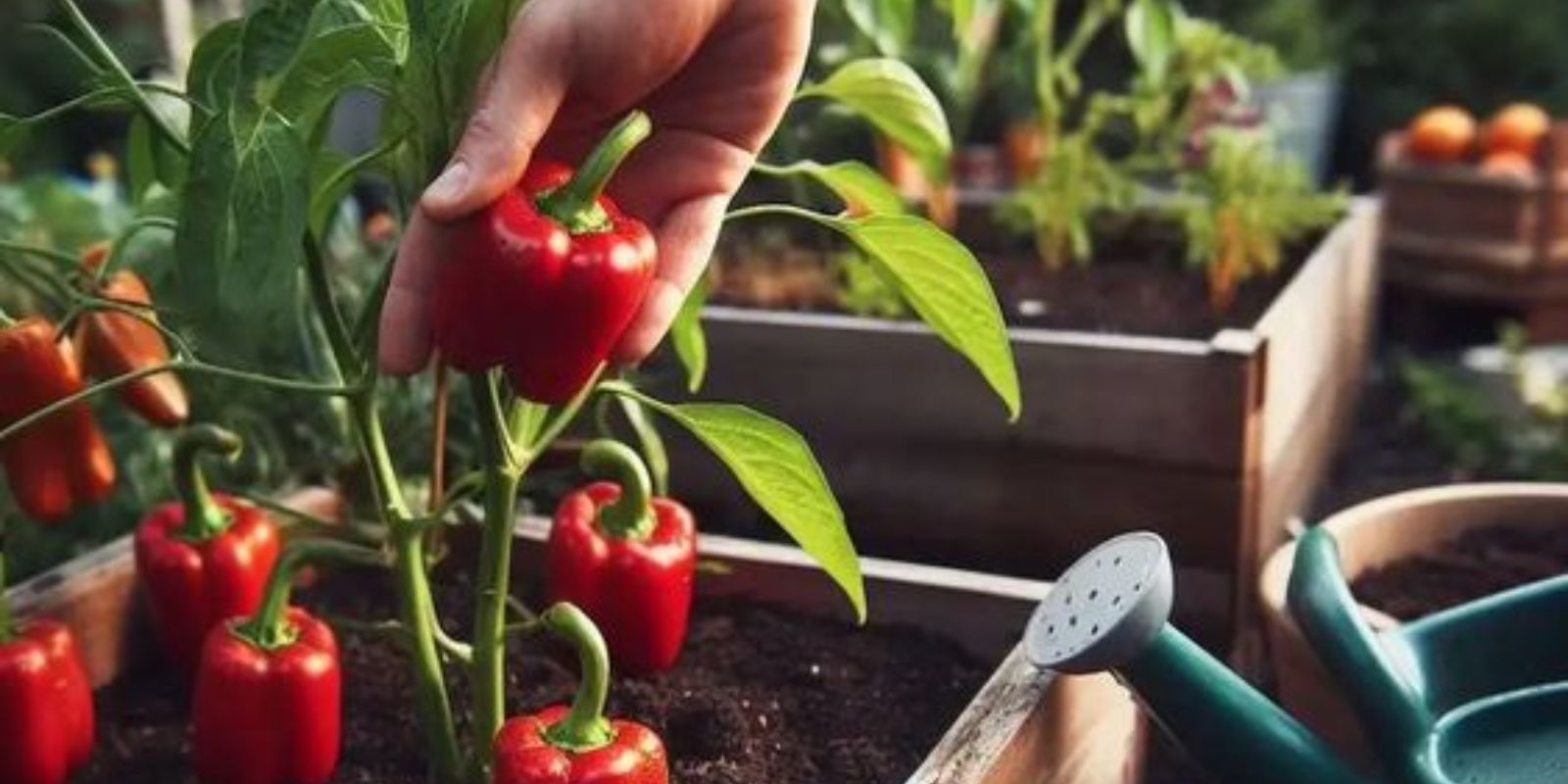Introduction
Growing peppers at home is a gratifying and accessible gardening endeavor that can yield a bountiful harvest. Peppers, known for their vibrant colors and diverse flavors, are rich in vitamins A and C, antioxidants, and fiber. Cultivating these vegetables in your home garden can not only enhance your culinary experiences but also provide a rewarding gardening challenge. In this article, we’ll guide you through the process of growing peppers from start to finish, ensuring that you achieve a thriving pepper garden right at home.
1. Choosing Varieties
Selecting the right pepper varieties is crucial for a successful harvest. Consider these factors when choosing:
- Growing Space: If you have limited space, opt for dwarf or compact pepper varieties that are well-suited for container gardening.
- Climate: Choose varieties that match your climate. For example, bell peppers and jalapeños do well in warm climates, while some hot peppers are more tolerant of cooler temperatures.
- Purpose: Decide whether you want sweet or hot peppers. Sweet varieties like bell peppers are perfect for salads and cooking, while hot peppers like jalapeños and habaneros add spice to dishes.
2. Preparing Seeds
Proper seed preparation enhances germination rates and sets the stage for healthy plants:
- Soaking Seeds: Soak pepper seeds in warm water for 24 hours before planting. This process helps to soften the seed coat, promoting better germination.
- Seed Starting Mix: Use a sterile seed starting mix to prevent diseases. Fill seed trays or small pots with this mix and moisten it before sowing.
3. Planting
Planting pepper seeds requires attention to detail:
- Sowing Seeds: Sow seeds about ¼ inch deep in the soil, spacing them 1 inch apart. Cover the seeds lightly with soil.
- Temperature: Maintain a soil temperature of 70-80°F (21-27°C) for optimal germination. Using a seedling heat mat can help achieve the right temperature.
4. Growing Conditions
Creating the ideal environment for your pepper plants is essential for their growth:
- Light: Peppers need 6 to 8 hours of direct sunlight daily. If growing indoors, use grow lights to supplement natural light.
- Temperature: Peppers thrive in warm temperatures. Maintain daytime temperatures between 70-85°F (21-29°C) and nighttime temperatures above 60°F (16°C).
- Humidity: Peppers prefer moderate humidity. Ensure good air circulation around the plants to prevent fungal diseases.
5. Watering
Proper watering is critical for pepper plant health:
- Consistency: Keep the soil consistently moist but not waterlogged. Allow the top inch of soil to dry out between waterings.
- Watering Technique: Water at the base of the plant to avoid wetting the foliage, which can lead to fungal issues.
6. Fertilizing
Fertilization supports vigorous plant growth and fruit development:
- Type of Fertilizer: Use a balanced fertilizer (e.g., 10-10-10) or one specifically formulated for vegetables. Avoid high-nitrogen fertilizers, which can promote excessive foliage growth at the expense of fruit production.
- Frequency: Apply fertilizer every 2 weeks during the growing season. Follow the manufacturer’s instructions for application rates.
7. Transplanting
Transplanting pepper seedlings requires careful handling:
- Timing: Transplant seedlings when they are about 10-15 cm (4-6 inches) tall and have several sets of leaves.
- Pot Size: If growing in containers, choose pots that are at least 12 inches in diameter to accommodate the plant’s root system.
- Spacing: Space plants 18-24 inches apart to allow for adequate air circulation and prevent overcrowding.
8. Maintenance
Ongoing maintenance ensures healthy plants and a successful harvest:
- Pruning: Prune pepper plants to remove any dead or diseased leaves and to encourage a bushier growth habit. Remove suckers (small shoots) that grow in the leaf axils to direct energy to fruit production.
- Pest and Disease Control: Monitor plants for common pests like aphids, spider mites, and whiteflies. Use organic pest control methods or insecticidal soap if needed. Ensure good airflow to prevent fungal diseases.
9. Harvesting
Harvesting peppers at the right time is crucial for flavor and quality:
- Maturity: Peppers are typically harvested when they reach full size and firmness. The color varies by variety, with some peppers changing color as they ripen.
- Harvesting Technique: Use scissors or pruners to cut peppers from the plant, leaving a small portion of the stem attached to prevent damage.
Conclusion
Growing peppers at home can be a rewarding experience that enriches your culinary repertoire and enhances your gardening skills. By following these steps, from choosing the right varieties to harvesting your peppers, you can enjoy a plentiful and delicious harvest. Whether you’re a seasoned gardener or a beginner, cultivating peppers offers both a challenge and a delightful reward.
Motivational Sentence:
Dive into the world of home gardening and discover the joy of growing your own peppers—transform your garden space into a haven of flavor and abundance! 🌶️

